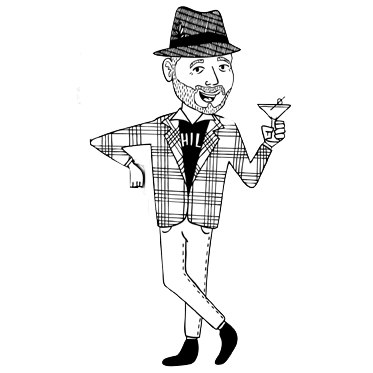One problem with checking wikipedia almost every day is that nearly every day is the anniversary of some frickin plane crash, which convinces you that planes are constantly falling out of the sky. But today is the anniversary of an amazing near crash, in which a quick thinking pilot landed the plane despite no engine power and very few working instruments. This is downright incredible, and the fact that they landed the plane in the midst of a family day celebration on the runway is almost humorous in a dark way.
At 1:21 GMT, the forty million dollar, state-of-the-art Boeing 767 had become a glider. The APU, designed to supply electrical and pneumatic power under emergency conditions, was no help because it drank from the same fuel tanks as the main engines. Approaching 28,000 feet the 767’s glass cockpit went dark. Pilot Bob Pearson was left with a radio and standby instruments, noticeably lacking a vertical speed indicator – the glider pilot’s instrument of choice. Hydraulic pressure was falling fast and the plane’s controls were quickly becoming inoperative…Only Gimli, the site of an abandoned Royal Canadian Air Force Base remained as a possible landing spot. It was 12 miles away…Unknown to him and the controllers in Winnipeg, Runway 32L had become inactive and was now used for auto racing. A steel guard rail had been installed down most of the southeastern portion of 32L, dividing it into a two lane dragstrip…Drag races were perhaps the only auto racing event not taking place on July 23rd, 1983 since this was “Family Day” for the Winnipeg Sports Car Club. Go-cart races were being held on one portion of runway 32L and just past the dragstrip another portion of the runway served as the final straightaway for a road course. Around the edges of the straightaway were cars, campers, kids, and families in abundance. To land an airplane in the midst of all of this activity was certain disaster…The 767 silently leveled off and the main gear touched down as spectators, racers, and kids on bicycles fled the runway. The gigantic Boeing was about to become a 132 ton, silver bulldozer. Pearson stood on the brakes the instant the main gear touched down. An explosion rocked the 767’s cabin as two tires blew. The nose gear, which hadn’t locked down, collapsed with a bang.. The nose of the 767 slammed against the tarmac, bounced, then began throwing a three hundred foot shower of sparks. The right engine nacelle struck the ground. The 767 reached the tail end of the dragstrip and the nose grazed a few of the guardrail’s wooden support poles. Pearson applied extra right brake so the main gear would straddle the guardrail. Would the sports car fans be able to get out of the way, or would Pearson have to veer the big jet off the runway to avoid hitting stragglers? The 767 came to a stop on its nose, mains, and right engine nacelle less than a hundred feet from spectators, barbecues and campers. All of the race fans had managed to flee the path of the silver bulldozer.

